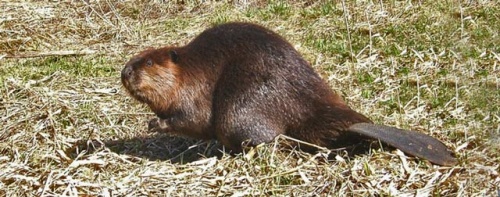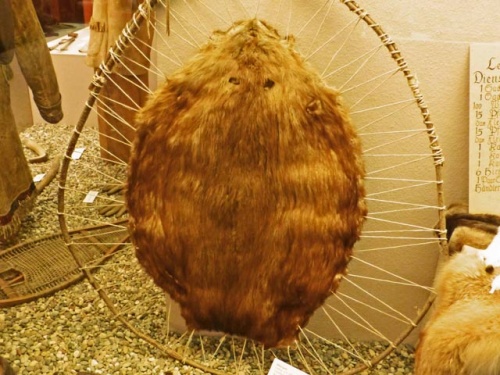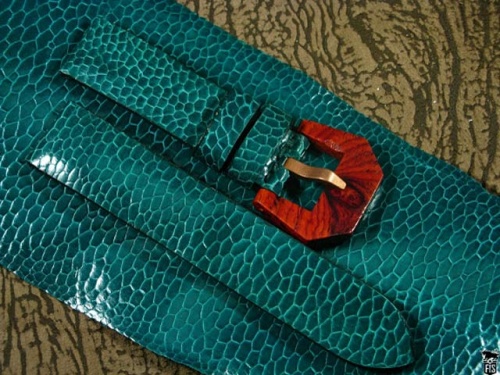Difference between revisions of "Beaver fur"
| (2 intermediate revisions by one user not shown) | |||
| Line 9: | Line 9: | ||
| − | Beaver pelts are traditionally used to make [[leather clothing|clothing]] (jackets, coats, [[Leather pants - Leather trousers|trousers]], [[leather gloves|gloves]], [[leather shoes|shoes]]). Beavers are mainly found in America, Canada and Siberia. Up to the middle of the 20th century, beavers were used in North America as a means of payment for trade with the | + | Beaver pelts are traditionally used to make [[leather clothing|clothing]] (jackets, coats, [[Leather pants - Leather trousers|trousers]], [[leather gloves|gloves]], [[leather shoes|shoes]]). Beavers are mainly found in America, Canada and Siberia. Up to the middle of the 20th century, beavers were used in North America as a means of payment for trade with the indigenous peoples. The tails of the beaver are hairless. Leather made using beaver tail looks like [[Reptile leather|reptile leather]] and was used in the past (when [[Fur - Fur skin|fur]] was more popular) as an alternative to [[crocodile leather]]. |
In Siberia, beavers were hunted so extensively that only a few remained at the beginning of the twentieth century. Since 1924, beavers have been protected leading to growth in their population. | In Siberia, beavers were hunted so extensively that only a few remained at the beginning of the twentieth century. Since 1924, beavers have been protected leading to growth in their population. | ||
| − | By the early 1900's, beavers were almost extinct in some parts of Canada. After 1961, following effective protective measures, hunting beavers was permitted to a limited extent. For the | + | By the early 1900's, beavers were almost extinct in some parts of Canada. After 1961, following effective protective measures, hunting beavers was permitted to a limited extent. For the indigenous peoples, beaver flesh is considered a healthy food source. |
| Line 27: | Line 27: | ||
</p> | </p> | ||
<p align=center> | <p align=center> | ||
| − | ''[[Leather watch strap|Watch strap]] from the tail of a beaver | + | ''[[Leather watch strap|Watch strap]] from the tail of a beaver.''<br></p> |
<p> </p> | <p> </p> | ||
| Line 33: | Line 33: | ||
<p align=center> | <p align=center> | ||
| − | <flashow> | + | <flashow>//www.youtube.com/v/KGYUDNJG_qY&fs=1&color1=0x660000&color2=0x550000&border=1|width=500|height=281,25</flashow> |
</p> | </p> | ||
<p align=center> | <p align=center> | ||
''The [[leather production|production]] of beaver [[Fur - Fur skin|fur]].'' | ''The [[leather production|production]] of beaver [[Fur - Fur skin|fur]].'' | ||
</p> | </p> | ||
| − | |||
| − | |||
| − | |||
Latest revision as of 08:29, 8 March 2023
Beaver pelts are traditionally used to make clothing (jackets, coats, trousers, gloves, shoes). Beavers are mainly found in America, Canada and Siberia. Up to the middle of the 20th century, beavers were used in North America as a means of payment for trade with the indigenous peoples. The tails of the beaver are hairless. Leather made using beaver tail looks like reptile leather and was used in the past (when fur was more popular) as an alternative to crocodile leather.
In Siberia, beavers were hunted so extensively that only a few remained at the beginning of the twentieth century. Since 1924, beavers have been protected leading to growth in their population.
By the early 1900's, beavers were almost extinct in some parts of Canada. After 1961, following effective protective measures, hunting beavers was permitted to a limited extent. For the indigenous peoples, beaver flesh is considered a healthy food source.
Tensed beaver fur German leather museum in Offenbach.
Watch strap from the tail of a beaver.
Video about beaver fur
The production of beaver fur.
Additional information











 a kotori web solution
a kotori web solution